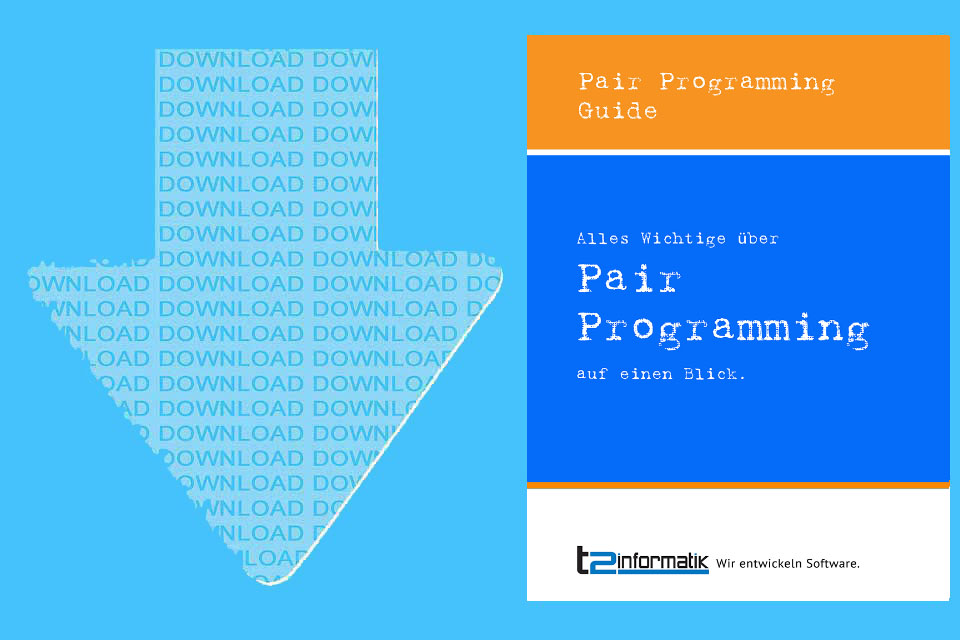Pair coding, a software enhancement technique where 2 programmers work with each other at one workstation, has gained substantial traction in various job areas of software anatomist. In the sp here of AI enhancement, where complexity and innovation are very important, pair programming can easily offer substantial advantages. This article explores several case research showcasing successful set programming implementations throughout AI development, highlighting how this strategy has facilitated problem-solving, enhanced code good quality, and accelerated development cycles.
Case Study a single: Enhancing Neural Network Training with Set Programming
Company: DeepTech Innovations
Project: Development of a Deep Learning Model intended for Image Classification
DeepTech Innovations, a start-up specializing in AI-driven image recognition solutions, faced challenges with optimizing their nerve organs network’s training method. Their goal has been to improve accuracy and reliability while reducing coaching time. They made the decision to implement pair programming to address these issues.
Implementation: The particular developers paired way up to focus on diverse aspects of the particular neural network, which includes hyperparameter tuning and even model architecture style. One programmer concentrated on adjusting the model’s layers plus activation functions, when the other done optimizing the teaching pipeline and info preprocessing.
Outcomes:
Increased Problem-Solving: Pair programming allowed the group to brainstorm plus experiment with various hyperparameters more successfully. The constant feedback cycle facilitated rapid version and adjustments.
Improved Code Quality: Typically the pair programming technique led to fewer pests plus more readable computer code. The developers examined each other’s signal in real-time, which in turn helped in capturing errors early in addition to ensuring adherence in order to best practices.
Accelerated Development: The collaborative approach triggered quicker prototyping and screening of different configurations, ultimately resulting throughout a better design that reduced education time by 30%.
Case Study a couple of: Streamlining AI Protocol Development in some sort of Research Lab
Firm: Quantum AI Labratories
Project: Development associated with a Reinforcement Studying Algorithm for Robotics
Quantum AI Labs, a research corporation focused on AI-driven robotics, aimed to develop a reinforcement learning (RL) formula for improving robotic control systems. The particular project required superior algorithm development and even extensive testing, which in turn prompted the use of pair coding.
Implementation: Two mature researchers were designated to pair encoding sessions. One researcher specialized in encouragement learning theory, while the other had intensive experience with robotic simulations. Their cooperation involved jointly creating the RL algorithm, implementing reward functions, and integrating the system with robotic simulations.
Outcomes:
Understanding Sharing: The partnering of experts along with different specializations resulted in a more healthy way of algorithm advancement. The reinforcement understanding expert shared assumptive insights, while the particular simulation expert provided practical feedback about implementation.
Faster Version: The researchers had been able to swiftly iterate on formula design and the usage, ultimately causing a functional RL system that demonstrated improved robotic performance in lab-created environments inside a quicker timeframe.
Improved Records: Real-time collaboration facilitated comprehensive documentation regarding the development method, which was useful for future exploration and publications.
Situation Study 3: Developing AI-Driven Chatbot Alternatives for Customer care
Organization: ChatGenie Inc.
Task: Development of an AI-Powered Customer Assistance Chatbot
ChatGenie Incorporation., a company specializing inside AI-driven customer support solutions, aimed to build a sophisticated chatbot effective at understanding and responding to customer queries with good accuracy. The task involved natural language processing (NLP) plus machine learning, which often led the staff to take on pair development as a key method.
Implementation: The growth team used pair programming to handle different aspects in the chatbot’s NLP abilities. One programmer aimed at developing language types and handling all-natural language understanding (NLU), while the other labored on integrating the particular chatbot with after sales systems and handling user interactions.
Outcomes:
Enhanced NLP Efficiency: Pair programming empowered the team to tackle challenges in terminology model training and even integration better. They were able to be able to fine-tune models and increase the chatbot’s understanding of user intents.
Increased Collaboration: Typically the approach fostered the collaborative environment where developers could rapidly share insights plus troubleshoot issues, top to more robust and accurate replies from your chatbot.
Quicker Time-to-Market: The mixed efforts of the paired developers come in a more efficient development routine. The chatbot seemed to be deployed and functional within a few weeks, significantly in front of the first timeline.
Example 5: Improving AI-Based Predictive Analytics for Economic Services
Company: FinTech Solutions Ltd.
Job: Development of a great AI-Driven Predictive Analytics Instrument
FinTech Alternatives Ltd., a financial technology company, focused to develop a predictive analytics device using AI to be able to forecast market trends and investment options. The project included complex data evaluation and machine learning algorithms, which directed they to explore pair programming.
Execution: The team executed pair programming to operate on different aspects of the predictive analytics tool. One designer concentrated on function engineering and information preprocessing, while the other focused about designing and coaching machine learning types.
Outcomes:
Improved Unit Accuracy: Pair development allowed for continuous testing and acceptance of the machine learning models, leading to better reliability and reliability within predictions.
Effective Knowledge Transfer: The effort facilitated the posting of expertise in data handling in addition to algorithm design, boosting the team’s total skill set in addition to understanding of the job.
Streamlined Development Procedure: The pair coding approach led in order to fewer delays and even a more methodized development process, causing a tool that has been well-received by clientele and met their performance expectations.
Realization
These case studies demonstrate that set programming can end up being a highly efficient technique in AJE development, offering benefits for instance improved signal quality, enhanced problem-solving, and faster development cycles. By fostering collaboration and leveraging the strengths of different team members, set programming enables a lot more efficient and modern solutions to sophisticated AI challenges. While AI technologies proceed to evolve, typically the insights gained by these implementations can guide future tasks and inspire ideal practices during a call.
